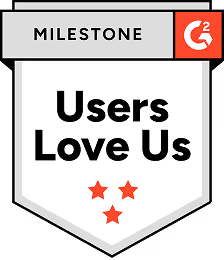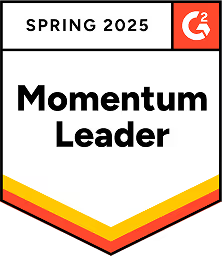Our Ultimate Guide to ICP Creation

Who is the ideal customer? The question is simple enough, but is the answer? We can all agree that a customer who’s identified a need and is ready to buy would be more than ideal; they’d be perfect, even more so if their company is profitable and growing.
So do we have our answer? Have we summed up the ideal customer for every sales team? The answer seems so straightforward it’s almost funny. Almost. Since many of us know, it’s not.
Defining the ideal customer in vague and idealistic terms does next to nothing for sales strategy generation. It’s comparable to not considering your ideal customer at all. The perfect customer for every sales rep or team doesn’t exist. But the ideal customer for your sales team does. It’s just a matter of identifying who they are. To do so, you need an ideal customer profile—an ICP.
The function of an ICP is to convert daydreams of the perfect customer into applicable specifications of who you should be selling to. Step away from “the ideal customer is anyone ready to buy” and move toward “the ideal customer is in the tech industry at a company of 50-500 employees that has a yearly acquisition budget of $65K.”
What is an ICP
ICP defines your ideal target. The company that will be the greatest return on investment because their sales cycle will be comparatively quick, they’re likely to use your product or service to its fullest capacity and they’ll stick with you.
ICPs are built from firmographics (industry, location, size, status, structure, performance) and behavioral data to define your target. And all this information comes from your database of customers. In other words, from what has already worked. It’s a statement or checklist of the characteristics of companies worth prioritizing.
Remember that an ICP is not a buyer persona. Your ICP is the umbrella under which your buyer personas live. An ICP leads you to a prospect or company, and a buyer persona informs how you handle them.
Why an ICP is Necessary
You’ll have a reference point for both ideal and poor fits before even starting the lead qualification process. It’s a system for cutting down on dead ends and redirecting your time to the most productive potential.
Benefits of an ICP:
Quickly identify where your solutions align with other companies’ goals. Your solutions and customers’ goals have to be aligned. If they are, the entire process, from initial outreach to winning the contract to managing their account, will be mutually beneficial and smooth. If they’re not, at best, you’ve gained an account that is a poor fit for your company, and at worst, you’ve thrown resources at the void.
Prioritize potential leads. Reps can assign priority levels to potential prospects. It’s like using a scale to weigh your options rather than just using your hands. Suppose company A fulfills your ICP’s criteria in full. Meanwhile, company B checks off half the parameters, and company C doesn’t meet a single parameter. You now have your order of operations. Prioritize Company A immediately. Attend to Company B when there isn’t a higher priority because it’s still an attractive option. And leave Company C alone altogether. Or use Regie. We help our customers create entire campaigns in minutes, so there’s time for every lead.
Focus on the market most lucrative to your company. Another way to save time and gain resources. Plus, doing well means your team’s confidence is intact. A rep with successes under their belt often performs better.
Building or Refreshing Your ICP
You’re going to start with data pulled from all of your accounts. You’re looking for commonalities between your current customers. This is the basis of an ICP, drawing on what has already worked to plan for what will continue to work in the future.
It starts with a list of all your current accounts. From that list, you’re going to sort out your best customers. Find them with questions like:
- Use
- Which customers have used your product or service to its fullest potential?
- Which customers have provided positive feedback?
- Who has stayed with your company for the longest time?
- Prospecting
- Which customers were most receptive during the prospecting process? Keep track of this stuff, Regie can.
- Which companies required the shortest sales cycle?
- Cost
- Which companies are your largest deals? Tip: if there is one remarkable outlier, don’t consider this especially useful. You’re looking for trends, not stray data, because you’re creating a strategy that is applicable, not bold.
- Which companies have the most upsells and expansions?
You don’t want to find the averages of every single account. You want to find the commonalities within the best accounts. The accounts that are easy to work with, who use your product well, and who are happy with it. Why? Because that means they’re a good fit for what you have to offer. You want to find other good fits. They’ll be easier to sell to and a better investment for your company.
Now it’s time to find what’s similar. Here’s what you’re looking for:
- Industry
- Employee size
- HQ location
- Founded date (company maturity)
- Funding status/total funding
- Valuation
- Investors
- M&A status
- IPO status
There’s no right or wrong answer. Whatever reveals itself as the common theme amongst your customers is worth adherence. This is who likes your product. So find more of them.
Now that you’ve taken care of the quantitative data, you need qualitative. There are two sure-fire ways to gather this, and it’s not an either-or. You should do both. The first is meeting with your sales team to discuss the more abstract commonalities amongst your best customers. In their experience, why do customers choose your company?
Whittle this down by asking questions like:
- What solutions do you provide to customers?
- What solutions are at the forefront of your marketing campaigns and website?
- Why is your company chosen over competitors?
A conversation like this will identify the customers’ perceived value of your company. If talking with your sales team doesn’t do that, then going directly to the source will.
Ask your customers for feedback via case studies, virtual meetings, surveys or email. The person on your team who has the best relationship with a specific account should be the one asking, and the inquiry can easily be framed as a quality assessment. If so, you should actually use it as a quality assessment as well and improve wherever necessary.
Maybe you’ve already been executing quality assessments. First, kudos. Second, refer back to these. The information can be a massive advantage for your ICP. Any questions asked of current customers should be grounded in discovering use case. Ask questions like:
- Why us
- Why did you decide to purchase our solution?
- What pain points were you looking to solve when you first purchased our solution?
- Solutions
- How has our product helped you solve those pain points?
- Do you feel it fulfills its promise?
- Use
- How do you use our product throughout the day?
- Why have you continued to use or product?
- Best and worst
- How is our product is a relief?
- How is our product frustrating?
The final step is creating your ICP with the data and information you’ve gathered. This can be in a simple spreadsheet, with cells corresponding to industry, employee size, and so on, or it can be written out in a short paragraph. How your ICP is notated is entirely up to you; just be sure it’s well defined and shareable.
How to Use Your ICP
Once you’ve created your ICP, there multiple ways to use it:
Finding qualified leads. The primary use of an ICP is for prospecting. Run companies against your ICP to determine their desirability. A company doesn’t necessarily need to check off the list in full, but if they do, then full steam ahead. A rule of thumb is, if a company can fulfill at least half the list, they’re worth keeping on your radar. Then for the companies that have all but three, two or one of the traits of your ideal customer, their priority levels are determined. For some sales teams, there will be a wealth of companies that perfectly fit their ICP, while for others, finding that abundance takes some time. Just remember, the better a company matches your ICP, the higher priority they are because they’re likely to be the greatest ROI.
Outreach guidance. From your initial reach to the last touch you make before winning the contract, incorporate the research you’ve already done in the form of your ICP. What this means is, let the company’s traits be one layer of influence in your interaction with your prospect. You know their employee count, so bring up how your product or service specifically helps teams of that size. You know their founding date, so focus on how you can help young or mature companies. The pain points they’re looking to address will, on some level, be a by-product of their work conditions, so leverage what you already know. Besides, it never hurts to flex your research.
Product team guidance. Product teams can also use an ICP. This will help the team share a clear idea of who they’re working to satisfy. It creates consensus, so future changes and expansions are geared toward customers already likely to be interested in your product or service.
Use multiple ICPs. While creating their ICP, some teams find that a second set of commonalities follows closely behind the leading commonalities. Don’t disregard that information. Create as many ICPs as your data asks of you. And again, attach priority levels to each one.
If you’re working without an ICP, create one as soon as possible. An individual rep can set out to do this on their own, or a team can come together to build one. If you already have an ICP, consider refreshing it. Knowing who your ideal customer is in specific terms will assist every aspect of your sales strategy. Targets become infinitely more precise, and you’re better able to think like them, which is a trademark of successful sales.
FAQs
Read more posts
View all BlogsNeed more help?
If you still have questions, make sure to check out our Help Center: there, you'll find all the tips & advice you'll need to get your team up & running with Regie.ai.









